I was born and raised in Maine, considered the final stop on the 2,200-mile Appalachian Trail. Though unaware of the significance, I spent my childhood sauntering down the familiar footpaths that would define my career. When my friend introduced me to the Appalachian Trail in 1998, I became enamored with the hiking lifestyle—warts and all.
My affair with the A.T. is now old enough to graduate from college, so I’ve picked up a few things over the years. I’ve section hiked and thru-hiked the trail (twice!) and I keep returning for more. If you’re looking for a detailed beginner’s guide, trek on thru my 15 tips for hiking the Appalachian Trail, one of the best hikes in the US.
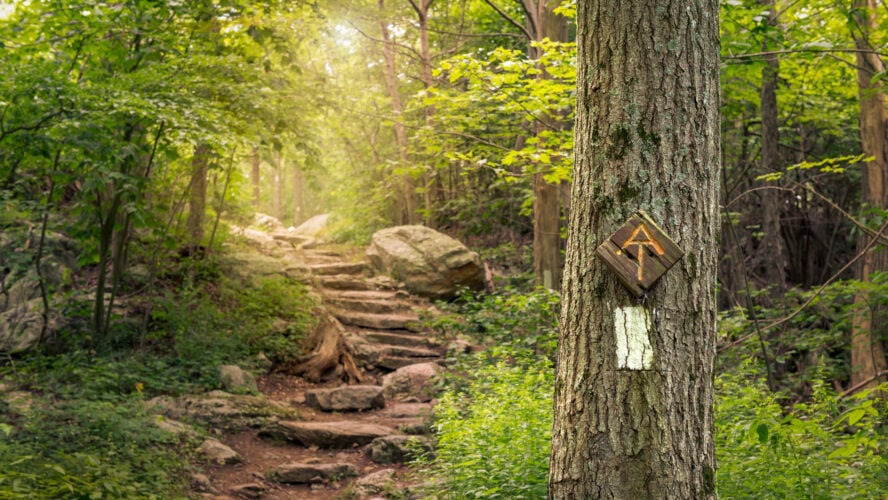
1. Do Your Research
Can you hike the Appalachian Trail with no experience? You absolutely can, but you must do your homework. Back in the day we didn’t have a lot of resources at our disposal, so we used what we could get our hands on. In today’s digitized world, there’s no excuse for skipping your reading.
Before you start planning, get acquainted with the itineraries and trip reports from successful hikers. There are plenty of how-to videos as well as documentarians and vloggers reporting straight from the trail worth checking out, too.
Besides being riotously funny, Bill Bryson’s famous travel book A Walk in the Woods is an informative account of his unsuccessful 1996 thru-hike. This has been my A.T. Bible since the olden days.
You can find everything logistical in The A.T. Guide by David Miller, a brilliant book written with the utmost attention to detail. There’s info about shelters, trailside towns, resupply stations, road crossings, parking spots and everything between.
Another great resource is FarOut, an interactive app that allows you to track your progress, access trail data, and receive real-time updates about the hike.
2. Know Your Limits
As your research will demonstrate, long-distance hiking is a great opportunity to learn and grow. The outdoors teaches self-sufficiency, builds inner strength, and grants the ability to overcome hardships.
That being said, there’s no tiptoeing around it: the Appalachian Trail is hard. Really hard. Only one in four thru-hikers manages to complete it. Still not convinced? Read about Maggie Slepian’s recount of thru-hiking the 2200-mile trail.
My first expedition on the Appalachian Trail ended unceremoniously with blistered feet and swollen joints, but I cherish the experience to this day. Our failures make us grow, and growing makes us appreciate our failures.
Now, don’t get me wrong—I’m not saying you should drop everything at the first sign of trouble. What I’m saying is knowing your limits is important. If you feel like your body and mind can’t go on, don’t overexert yourself.
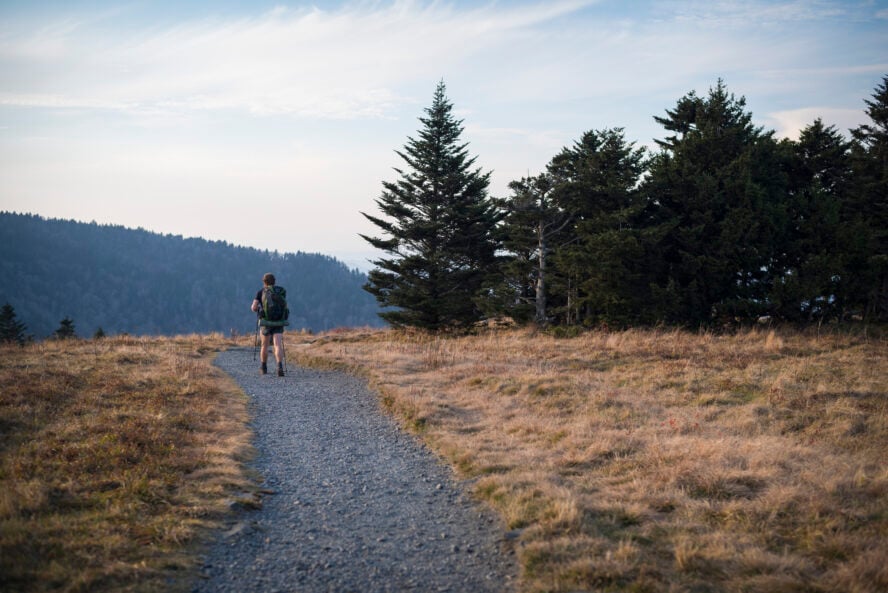
3. Time Your Start Carefully
I often get asked: When is the best time to start hiking the Appalachian Trail? With so much conflicting information, it’s easy to get confused.
The official hiking season on the A.T. starts in April and lasts until October 15th. Over time, people started hiking the trail earlier in the year to avoid the dreaded “hiker bubble”, and as a result March has become the new crowded month. When there are 50-70 hikers starting their trek every day, it becomes difficult to find camping spots and accommodations.
For thru-hikers (no matter your level of experience), I suggest starting in April. For section hikers that don’t have the same time pressure, May is your best bet.
4. Build Up Your Body
It’s important you don’t underestimate such a demanding physical challenge. Many folks think they’re ready for a thru-hike after a jog or two at home, only to wind up puffing and panting their way to the nearest shuttle home. Avoid making the same mistake.
So, how do you prepare your body for hiking the Appalachian Trail? Here are three things to focus on:
- BALANCE: You need to be comfortable wearing a heavy pack while traversing diverse and unpredictable terrain. The best way to practice is to wear a weighted backpack while walking on a balance beam or navigating a rock field.
- CARDIO: Strength won’t get you over the finish line; endurance will. The best way to build up your cardiovascular stamina is to train on a treadmill, stairmaster, or by taking long walks and runs. Cardio is especially important for people coming from seaside towns, because the higher elevation on the trail impacts breathing and lung capacity.
- STRENGTH: If your extremities can’t handle the stress of long-distance hiking, they’re in for a world of hurt. I suggest implementing a lunge and squat routine for strengthening your legs. Also, repetitively unloading and reloading your pack onto your back adds up over time, so if you lack upper body strength, you’ll want to add in some bicep curls.

5. Craft a Healthy Spending Budget
One of the most overlooked tips for hiking the Appalachian Trail is setting aside enough extra spending money. The main reason this is important is—believe it or not—long-distance hikers aren’t robots. Occasionally we want to unwind, treat ourselves to a good meal, and take a detour to see a concert or visit a festival.
Lots of people hop off the trail to recharge their batteries in New York or D.C. before continuing on the gorgeous stretch of the A.T. waiting in Maryland. Having extra cash on hand allows you the flexibility to do these things.
It’s also important to budget for the shift in prices that happens as you venture farther north. As soon as you reach North Virginia, the trail gets flatter, busier, and a lot more expensive. From then on, you can expect your food and lodging expenses to double. Dishing out $100 for a hotel or $30 for a hostel is not uncommon. There’s also fewer budget stores up north, so you’ll have to make do with what you find.
But on the plus side, the north is more populated, which means easier access to food and running water. Yay!
6. Go It Alone or Pick Your Partner Carefully
Hiking the Appalachian Trail alone is hard enough, but hiking with a companion can be harder. Whether it’s a partner, friend, or family member, relationships rarely stay the same. You have to be willing to spend 24/7 with the same person.
Such a demanding environment magnifies a person’s quirks, peculiar habits, and flaws. This can create friction between incompatible companions, leading to bickering and disagreements. Keep this in mind when you’re deciding whether to hike with someone.
On the flip side, hiking with a compatible person can make for a lifelong friendship. That’s what happened to me. In 2002, I ran into a group of thru-hikers and instantly clicked with one of them. They’ve been my regular hiking partner ever since. We thru-hiked together in 2014 and 2017 and intend on continuing to do so.
7. Leave Your Dog at Home
As someone who’s enjoyed hiking countless miles with her canine pal, I say this with conviction—don’t bring your dog on the trail.
It’s already hard enough for hikers to handle the crowds, rugged terrain, and temperature extremes. There’s no need to drag an animal through it.
If you insist on bringing your dog with you, follow the rules. Most sections on the Appalachian Trail allow dogs but they must be kept on a leash at all times. I loved hiking with my dog until it was attacked by another whose owner didn’t do his due diligence. Now, she’s terribly afraid and can’t stand the pressure of being out there.
Leashes minimize unwelcome encounters and, more importantly, prevents dogs from losing their way. Every year, we have dogs go missing and it breaks my heart when owners don’t want to stick around to find them.
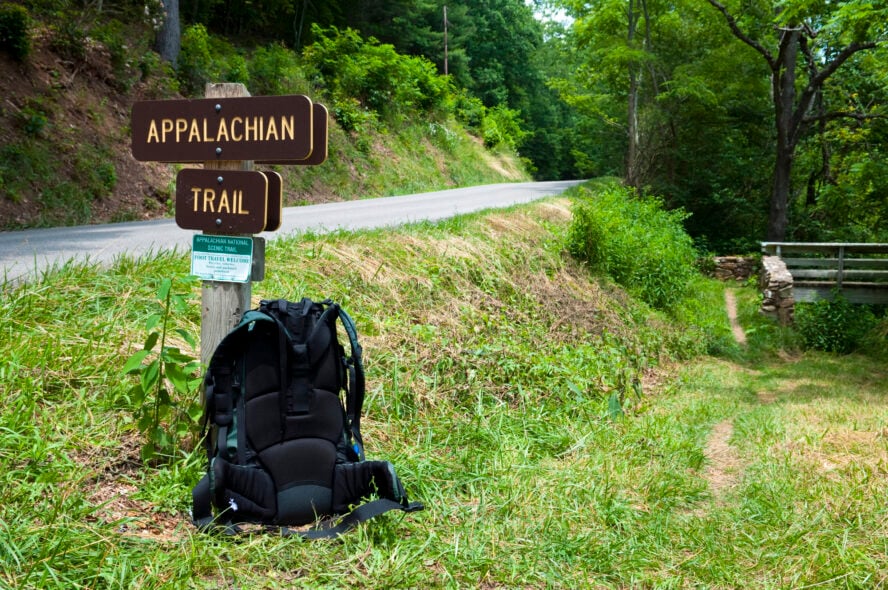
8. Plan Your Food 1-2 Weeks in Advance
While hiking the A.T., you need to consume between 3,000-5,000 calories a day. Carrying and eating that much food requires strategy. I recommend only planning your food a week or two in advance.
We used to rely on bounce boxes—parcels that thru-hikers send ahead to various resupply points along a trail—but nowadays I wouldn’t recommend it. The main reason is that they often end up being a big waste of money (and food).
Lots of folks quit early on, never reaching the supplies waiting for them. I’ve also seen hikers pick up their bounce boxes, cringe at the thought of eating more of the same stuff, dump them, and go splurge on groceries instead. Planning your food a couple weeks out allows you to vary your diet and satisfy those inevitable cravings.
9. Forget About Optimal Mileage
Early on the Appalachian Trail, I regularly encounter people set on meeting their self-imposed mileage quotas and milestones, like sales reps rushing to hit their quarterly targets. That mentality is best left at the trailhead, because it brings serious risk of burning out.
What you should do instead is keep your mileage low at the beginning, then increase it as you get stronger. In a month, you’ll be able to do 12-15 miles a day. In three months, you’ll be dropping twenties with ease. Remember: This is a test of endurance, not speed.
I’ll let you in on a little secret: It’s easy to make up your mileage in the second half of the trek. There’s a stretch beyond Harper’s Fairy and before New England where the trail flattens out and you’re treated to these pleasant valley walks anyone can breeze through. So take your time and enjoy the experience; the rat race belongs in the office.
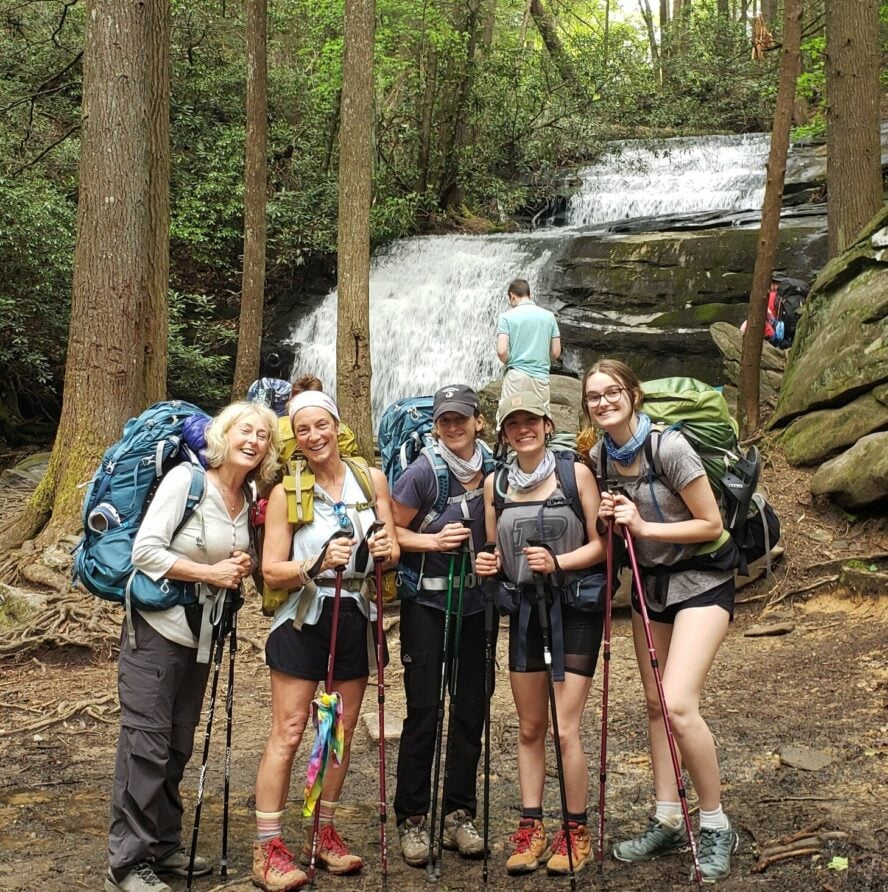
10. Don’t Plan On Finding a Partner on the Trail
This is something I tell all my first-timers. Some of you might be lucky enough to bump into your perfect hiking partner on the spot, but don’t set yourself up for disappointment by counting on it.
The A.T. attracts people from all walks of life and every corner of the world—the young and the elderly, burger flippers, and big shot CEOs alike. What they have in common is that most of them are going solo. Finding a compatible person with the same pace and schedule as yourself is extremely difficult. And on the off chance that does happen, what are the odds you’ll click?
I know some of you are worried about being alone out there. But rest assured—you’re never going to be alone for the first month, and after that only sporadically. Over 5,000 hikers attempt the A.T. each year, making the trail an ambulatory super highway. With this in mind, your main focus should be on your hike, not your company.

11. Protect Yourself
People always ask me: “Is it safe to hike the Appalachian Trail alone?” I respond that yes, it is, but it’s important to know how to protect yourself. Hiking the trail with a partner can serve that purpose, but if you’re alone, consider carrying something for protection.
A gun isn’t the best choice. The A.T. passes through 14 states, each with their own gun laws, making for complicated logistics and paperwork. Also, guns are pretty darn heavy for carrying on a thru-hike. Instead, many hikers opt for pepper spray or a small, lightweight stun gun.
One other note on this matter pertains to awareness. While many hikers enjoy trekking with their earbuds in, it’s not a good idea. Being unaware of your surroundings can result in accidents and injuries. If you’re going to listen to music or a podcast out on the trail, I suggest hiking with only one earbud in.
12. Keep Food Safe From Bears
I’ve covered a lot of planning and preparation tips in my previous article on hiking the Appalachian Trail. One thing I didn’t talk about is keeping your food safe from bears.
When you’re camping in the woods, your food, drinks and cosmetic products emit scents that attract bears. The best way to protect your food from bears is to use a bear canister, suspend it from a tree with a bear bag, or stuff it into a certified bear-resistant stuff sack and anchor it to an immovable object. Each method involves carrying certain gear and implementing proper storage techniques.
Bear canisters are heavy-duty containers you can buy. To hang a bear bag, you’ll need to carry 50-100 feet of cord and stuff sacks for storing your food and scented items. The third option available is to use a bear-resistant stuff sack, which is essentially a lightweight bear canister. These can either be hung or anchored to an immovable object on the ground.

13. Respect Wildlife
If you show wildlife proper respect, they’re not likely to bother you. But it’s important to use your common sense in the event of an encounter. On the subject of bears again, here are two things you should never do, or it could result in a bear instinctively chasing you down:
- Stand between a momma bear and her cub
- Run away
Besides bears, it’s important to be aware that moose, lynxes, and mountain lions and other critters live along the Appalachian Trail. In the summer, be mindful of venomous snakes. Copperheads usually hide in the tall grass, while rattlesnakes curl up behind rocks and wait for unsuspecting victims.
Up north, you have to contend with moose, which can become aggressive if interrogated. If you happen to get close enough to alarm them, though, my best advice is to hide from them, as they’re not likely to put much effort into finding you.
In general, the wisest thing you can do is to leave animals alone. Don’t try to play with them or give them food. We are only visitors in their territory and have to act accordingly—as stewards of the environment, not self-entitled boors.
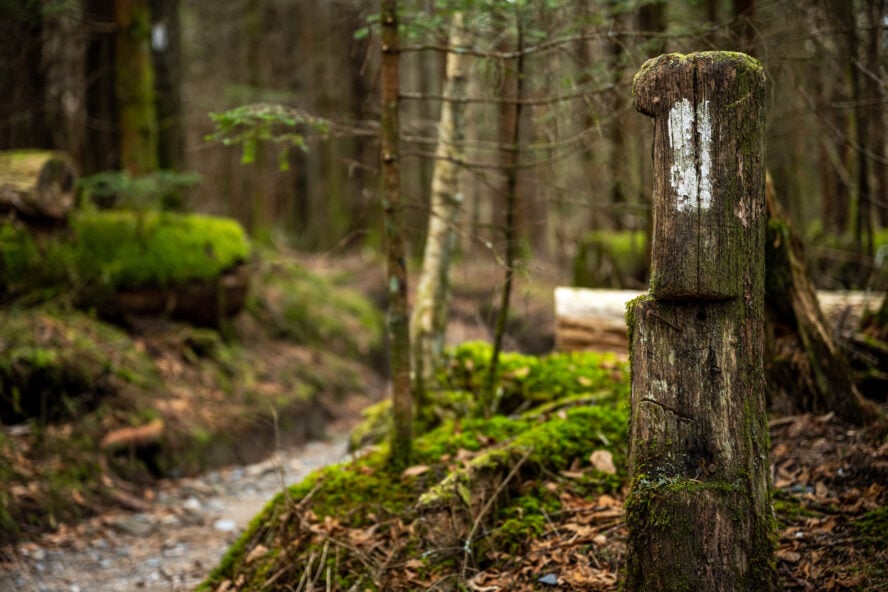
14. Use Proper Shelter Etiquette
Along the Appalachian Trail, there are designated accommodations that we call shelters. These are very basic, three-sided structures with a roof and wooden floors. A handful of them have a door. Hikers gravitate towards shelters because of their proximity to water sources and camping spots. But, unless there’s a storm raging outside, I recommend pitching a tent outside over staying in a shelter.
Older shelters sleep 4-5 people, while newer, double-decker designs can hold up to 20 people. At full capacity, it’s armpit to armpit inside. The shelters are often home to poisonous spiders and mice. Be mindful of black widows, brown recluses, and the possibility of contracting norovirus from mouse droppings.
One last thing to keep in mind is that sound carries a great distance in the forest. Whether you’re staying in a shelter or a tent outside, it’s easy for people around you to hear even the slightest of whispers.
15. Leave No Trace
An unexpected upside of the COVID-19 pandemic is that people have started spending more time in nature. This is a positive thing but an influx of people can negatively impact the environment.
The biggest problem is the increased amount of litter. Folks unaccustomed to the outdoors often come expecting forest fairies to whisk away their waste. As a result of people leaving trash behind, there have been more reports of encounters with wild animals and closed campsites.
Whether you’re just starting out or you’re a seasoned outdoorsman, it’s useful to brush up on the principles of Leave No Trace. Leaving the environment better than we found it is not only a good tip for hiking the Appalachian Trail, it’s a way to ensure the outdoor spaces we enjoy for future generations. I regard the Appalachian Trail as a permanent school of the outdoors and I hope that you will do the same.
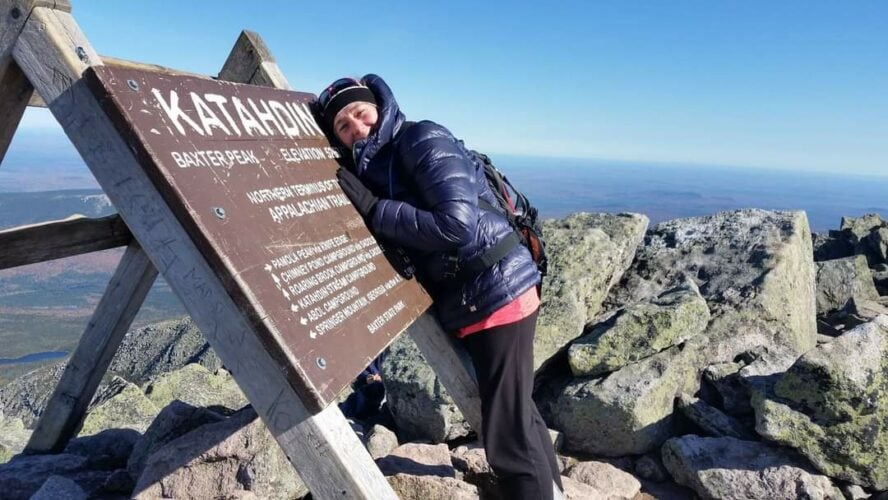
Ready For An Appalachian Trail Adventure?
There you have them, my 15 tips for hiking the Appalachian Trail. I’ve done my best to cover every aspect of the journey. This is an amazing trek everyone should experience once in their lives, even if you only do it in sections. It’s changed my life and it might do the same for you.
So have fun out there! And don’t worry if your first thru-hike doesn’t succeed. Or the second. Or the fifth. If Earl Shaffer could go back to the A.T. on the cusp of age 80 and complete it again, anything’s possible!







